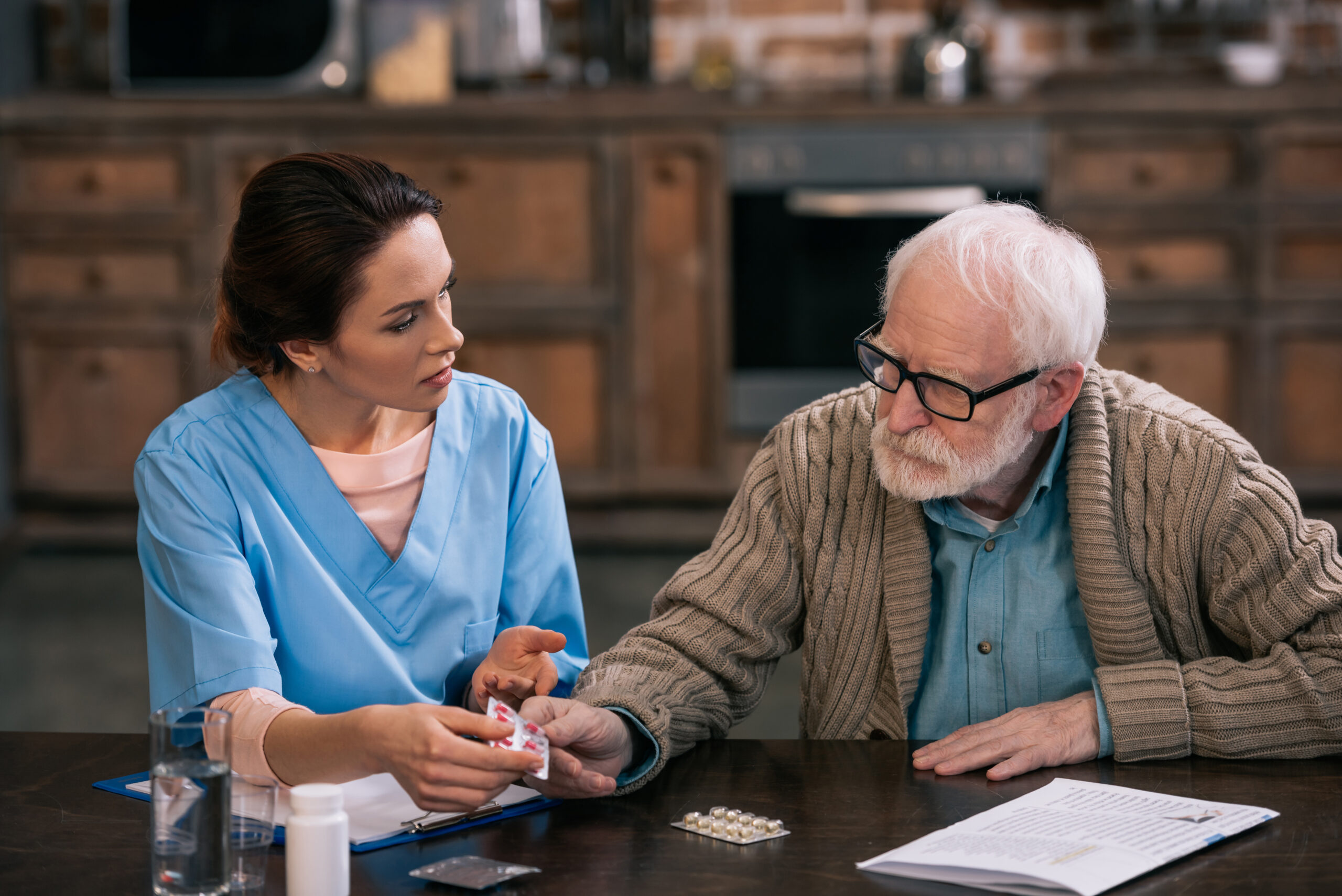
The aim of hospice is to maximize a patient’s quality of life at every stage of their illness. Among other symptoms, this often involves addressing severe pain. A range of approaches can be used to address a patient’s pain, including medication, psychological and spiritual support, and complementary services such as therapeutic massage. Hospice caregivers can also provide companionship to help ease discomfort.
Signs And Symptoms Indicating Pain Management May be Needed
Some patients may be able to communicate their level of pain. For these patients, a hospice team can use a pain rating scale to assess their level of pain, in which the patient rates their pain on a scale from zero to ten or points at pictures of smiley faces with a range of expressions to match how they feel.
Other patients, however, might be unwilling or unable to express their suffering. For example, patients suffering from dementia may not be able to let others know about their pain verbally. In these cases, the FLACC scale can be used to assess non-verbal indicators of pain.
Below are some of the signs indicating a patient needs pain management:
- Rapid blinking or tightly closed eyes
- Increased breathing rate
- Pacing or rocking
- Crying
- Acting withdrawn or confused
- Aggression or anger
- Moaning or calling out
- A rise in systolic blood pressure over the patient’s baseline
- A rigid body posture or holding arm or leg muscles tightly
- Resisting care
Hospice Pain Medication Protocol
In keeping with the emphasis of hospice on making patients feel comfortable, medication is often used in pain management as appropriate. These medications may include opioids, which work by attaching themselves to opioid receptors within the brain to block the sensation of pain in patients whose pain is moderate to severe. These medications may come in the form of morphine, hydromorphone, and oxycodone.
When patients are given this type of medication, the hospice pain medication protocol requires their care team to regularly assess whether opioids are still necessary. They must also take great care with the selection, duration, dosage, and discontinuation of these drugs, and ensure that these medications are securely stored and not being misused by other people in the patient’s home.
Communication Is Key for Pain Management in Hospice
Communication plays a central role in pain management in hospice, from the patient’s verbal or nonverbal communication of their pain to the communication between the patient and staff about how well a particular approach is working and whether dosages need to be adjusted. Hospice teams are constantly reassessing patients’ levels of pain and working to ensure that they are as comfortable as possible.
Emotional Pain and Physical Pain Are Linked
Because emotional pain and physical pain are linked, hospice pain management plans assess a patient’s emotional and spiritual pain as well. Anxiety, for example, can increase a person’s response to physical pain, while the physical symptoms of pain can increase anxiety, creating a challenging cycle.
Emotional pain may be addressed with medications for anxiety and agitation if indicated. Social workers and spiritual professionals are available to address the patient’s spiritual and emotional needs through supportive listening, counseling, and conversation. It is important for family members to avoid adding to the patient’s anxiety or stress during this time by arguing in front of them.
Medications Commonly Used for Hospice Pain Management
Opioids are not the only medications used in hospice pain management. Non-opioid pain medications are frequently prescribed for moderate to severe pain. Additionally, other medications can be prescribed to help relieve the discomfort of constipation, while steroid medications may be suggested to help with pain and swelling.
Misconceptions About Pain Medication in Hospice
There have been many reports in the news media about the dangers of opioid addiction, and it is not uncommon for families to have reservations when these medications are being considered for their loved ones. However, these dangers are rarely a concern for those nearing the end of their life. Patients in hospice have a limited life expectancy, meaning there is often not enough time to develop an addiction to the medication. Therefore, providing the most effective medication for pain relief is the main concern.
In addition, some families have expressed concerns that opioid use will cause their loved one’s life to end sooner; however, research has indicated this is not the case. Patients under hospice care tend to live longer when their symptoms are managed. Starting hospice care as early as possible in the patient’s terminal diagnosis allows them to have their pain addressed quickly so they can get the most out of hospice support.
Get Pain Management from Hospice Care
If your loved one is suffering as they approach the end of their life, reach out to Traditions Health. Their caring and professional team will work to ensure that your loved one can enjoy the greatest quality of life possible at every stage of their journey.
